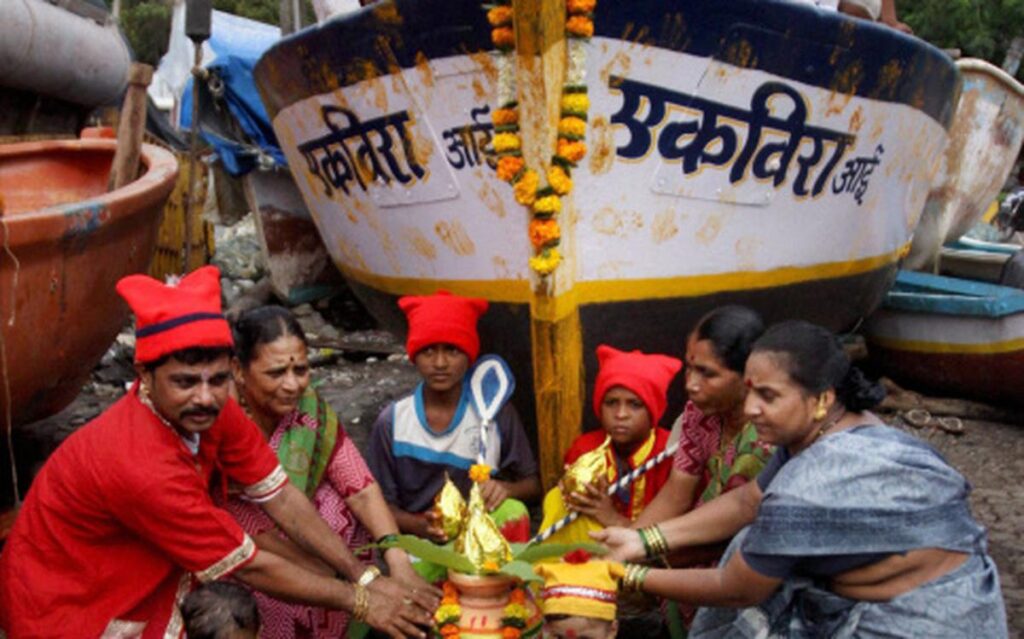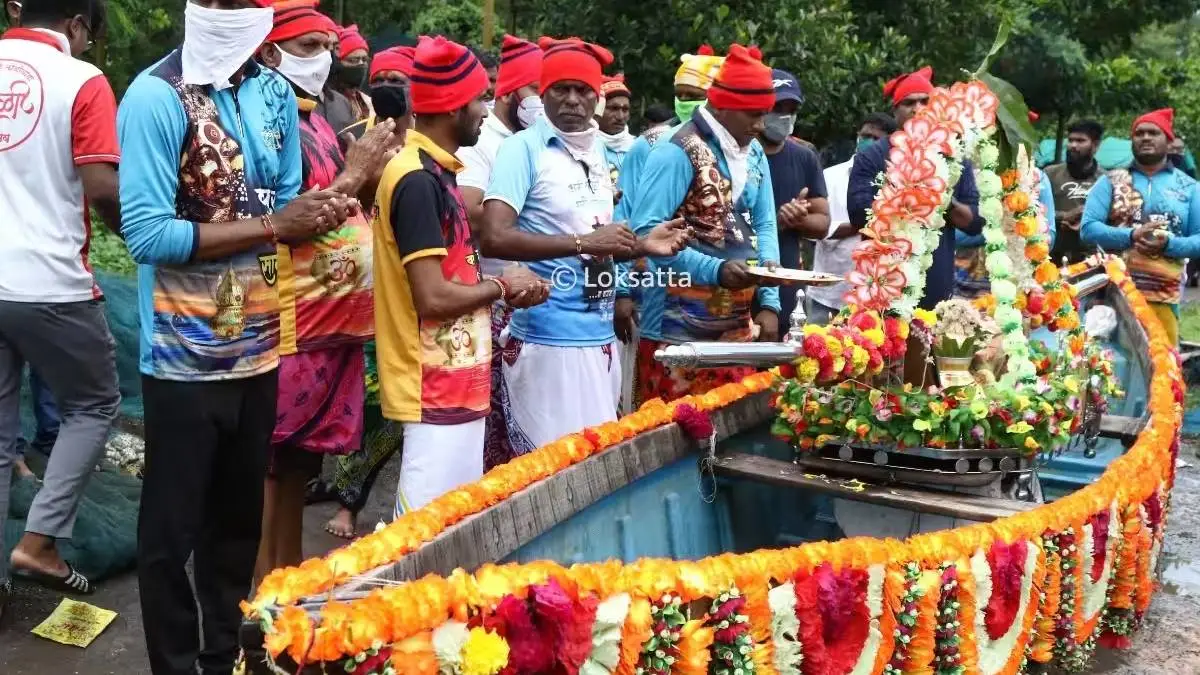
The Hindu festival of Narali Purnima, also known as the Coconut Festival, is celebrated with great enthusiasm by the fishermen and fishing communities in Maharashtra and Goa. This vibrant festival takes place on the full moon day of Shravan, one of the four most auspicious months in the Hindu calendar. The full moon, or Purnima, in Shravan is considered especially sacred. This festival marks the end of the fishing ban, allowing trawlers to venture into the deep sea for regular fishing once again. The name Narali Purnima comes from the word ‘Naral,’ which means coconut. On this day, coconuts are offered to the sea, symbolizing the name Narali Purnima. Other names for the festival include Shravani Purnima, Raksha Bandhan, and Rakhi Purnima.
Significance of Narali Purnima
The festival has special significance for the fishing community. The period before the full moon day of Shravan is regarded as the mating season for fish. During this time, fishermen abstain from fishing to avoid disrupting the reproductive process. Consequently, no fish are caught or consumed by the community. This period of abstinence ends on Narali Purnima when a coconut is offered to the sea at high tide. The sea, known for its intensity during high tide, is believed to be calmed by this offering.
The Ritual of Offering Coconuts
Coconuts have long been regarded as auspicious offerings to gods in Hindu festivals. Every part of the coconut tree—leaves, bark, and the coconut itself—is useful to humans, making it a valuable offering. The coconut, with its three eyes, is also associated with Lord Shiva, who has three eyes. Thus, breaking a coconut is seen as a propitious act before beginning any new venture, such as the fishing and water-trade season. The coconut offering is believed to appease the Sea God Varuna, ensuring a safe journey and prosperous fishing season ahead. It is also thought that after this day, the wind’s strength and direction change in favor of fishing.
Preparations for the Festival
In the days leading up to Narali Purnima, fishermen repair their old fishing nets, paint their boats, and fix any leaks. New boats and fishing nets are often purchased. Boats are decorated with colorful buntings and flower garlands. On the festival day, traditional foods made with coconut, such as naraali bhaat (coconut rice) and narlachi karanjis (sweet coconut-stuffed bread), are prepared.
Traditional Attire and Dance
On the day of Narali Purnima, fishermen and their families don traditional attire. Men wear lungis and caps, while women wear sarees in the Navvari Maharashtrian style, accessorized with traditional gold jewelry, especially nose rings or nathnis. Men also wear armlets, bangles, and earrings. The community performs the traditional Kharvi/Koli dance, depicting their daily life at sea through movements that imitate waves, casting nets, and the breakers moving from cliffs.
The Coconut Offering and Prayers
During the celebration, coconuts are thrown into the sea as an offering. The fishermen worship the Sea God Varuna, seeking protection and blessings for a successful fishing season. The sea is considered sacred, being essential for their survival. Prayers and poojas are also offered to the boats. Oil lamps are lit and set afloat on the waves, carried in boats. Pieces of coconut and coconut water are distributed as ‘prasad’ to the community members.
A Festival of Joy and Community Spirit
Narali Purnima is one of the most important festivals for the Kharvi/Koli community, celebrated with immense joy and happiness. It is both a social and occupational festival, observed since time immemorial. While there may be regional variations in the celebrations, the significance, sentiments, and rituals remain largely the same.
The festival is a beautiful blend of devotion, tradition, and community spirit, marking the start of a new fishing season and celebrating the blessings of nature and the sea.


